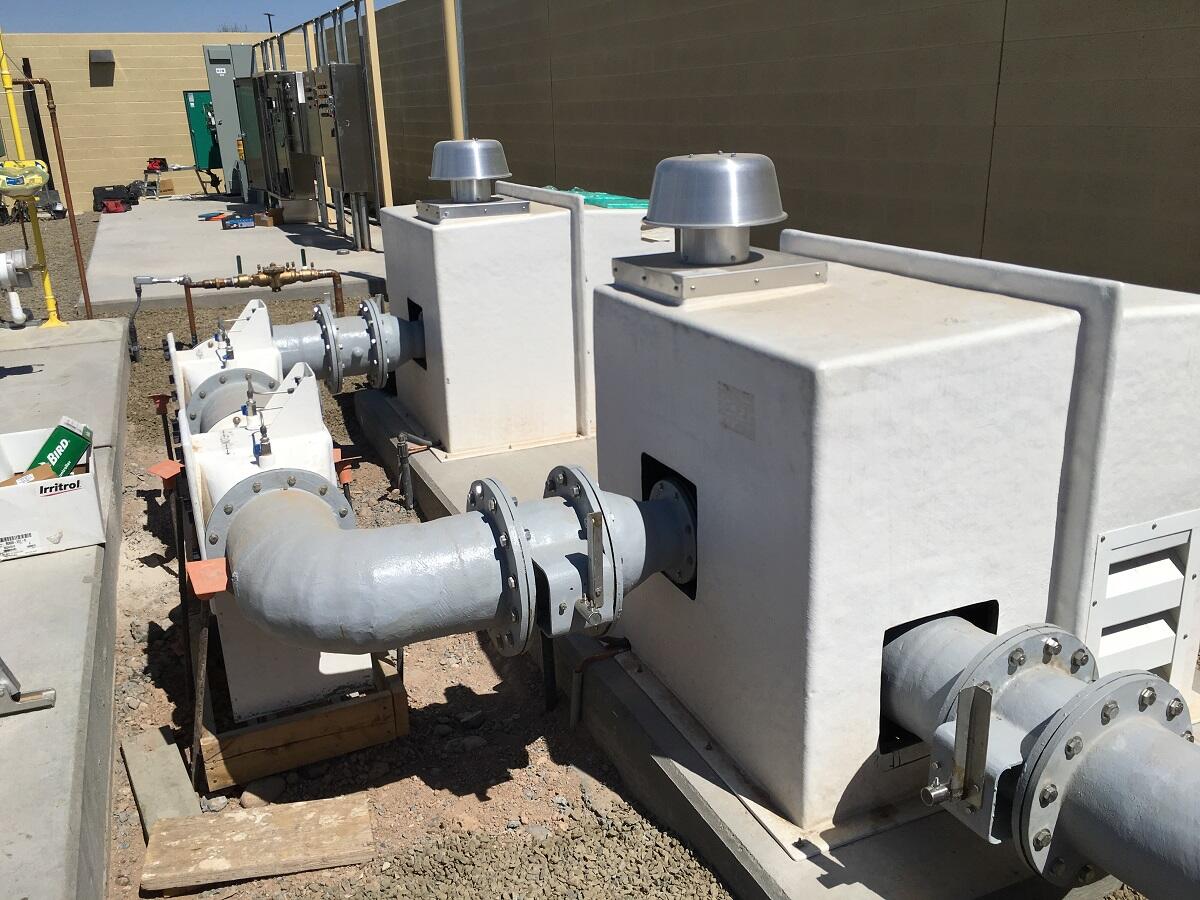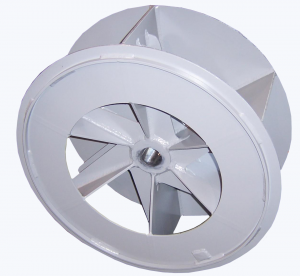Vibration Isolation
Vibrations may be induced in a Fan or Blower by unbalanced centrifugal forces or by aerodynamic forces. The full force will be transmitted to the supporting structure if the fan is rigidly mounted.
The forces transmitted may be smaller or greater if the Rotating Equipment is flexibly mounted. The transmission can be reduced if the inertia of the moving system is used to oppose the vibrating force or couple.
The ratio of transmitted force to impressed force is called "transmissibility."
Ignoring any damping, the transmissibility ( TR) may be deter mined from the disturbing frequency (f) and the natural frequency (fn) of the mounted system using the following formula. Link
This Equation indicates that transmissibility will be unity when the ratio of disturbing frequency to natural frequency equals the square root of two.
Transmissibility will be less than unity for higher values of this ratio, and greater than unity for lower values.
A much more complicated expression is required to define conditions where damping cannot be ignored.
The same general conclusions can be drawn in any case. Isolation can only be achieved when the ratio f/ f n exceeds the square root of two.
Amplification results for any other case. Damping reduces amplification or isolation. The former is important when passing through a critical speed (f /fn = 1.0).
Reduction in isolation due to damping is relatively unimportant since compensation by increasing f/ f n is usually feasible.
Vibration mounts for a Blower should be designed with both the Blower and installation in mind. In any case the Blower should have the best practical balance. Assuming for the moment that any Blower, regardless of the total mass involved, will be balanced to the same degree of perfection (i.e., a certain unbalance in ounce-inches) Blower speed will determine the magnitude of the disturbing force as well as its frequency. In many cases slow speed Blowers do not need any vibration mounts at all. The need for isolation increases
as the possibility of transmitting an annoying vibration in creases. Such is the case when the supporting structure is relatively light or when there is a relatively direct connecting path to a sensitive area. Upper story installations require better isolation than basement installations. Sound studios require better isolation than industrial areas. Experience seems to indicate that transmissibility, as calculated from Equation 328, should be reduced to 0.20 if any vibration mounts are to be employed at all.
Vibration tolerances will frequently place the maximum transmissibility at 0.10 or even lower.
The materials generally used for vibration mounts are steel springs, or rubber-in-shear. Rubber, being practically incompressible, is usually bonded to two steel parts and loaded in shear. Steel springs are loaded directly in compression. Snubbers may be required to prevent swaying.
A number of isolators are generally required for support. They should be distributed according to the distribution of load. The load may be due to thrust forces as well as to the dead weight of the equipment. The deflections must be uniform if a level is to be maintained. This can be accomplished by varying the durometer of rubber, or the spring constant of a spring.



